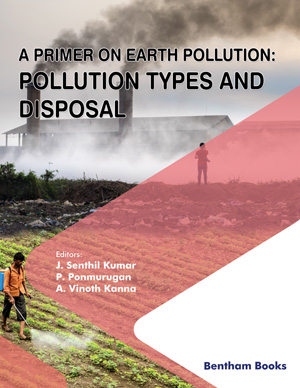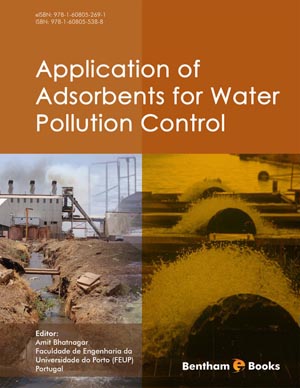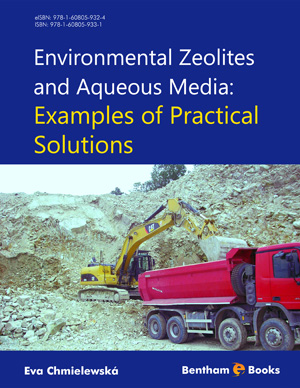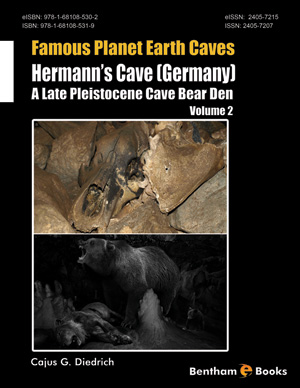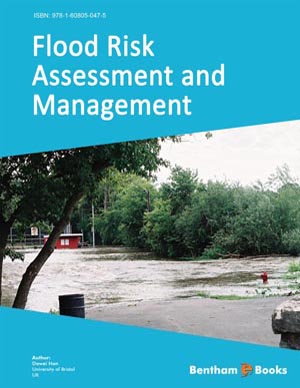Anthology of Important Mottos, Statements and Stimuli
Page: iii-iv (2)
Author: Hubert Engelbrecht
DOI: 10.2174/9781681086019117010003
Ecosystem Transformations - Natural and Anthropogenic Forcings
Page: 1-20 (20)
Author: Hubert Engelbrecht
DOI: 10.2174/9781681086019117010004
PDF Price: $15
Abstract
The evolution of ecosystems and life embedded in the spheres of Earth, as well as the theoretical background - entropic dissipation of energy and matter causing rising complexity - is outlined. This is followed by a description of how natural - terrestrial and extra-terrestrial - forcings (e.g. discrete volcanic eruptions, large igneous provinces, silicate weathering, continental drift, albedo, bioevolution; Milankovitch cycles, solar irradiance, galactic tides, impactors, gamma ray bursts) changed the ecosystems in the geological past and how life adapted to and transformed these ecosystems. Examples for the latter case are the Precambrian Great Oxygenation Event, the colonization of continents by plants since the Silurian and the spread of mammals since the early Tertiary. Brain growth, the invention of tools, the controlled use of fire, cooking, and creative organization of niches enabled hominines to escape natural habitats to innumerable artificial habitats. The didactic value of fossilized remnants of geological climate indicators and of ecosystem changes (preserved in geotopes) is emphasized.
The Anthropocene
Page: 21-26 (6)
Author: Hubert Engelbrecht
DOI: 10.2174/9781681086019117010005
PDF Price: $15
Abstract
The concept of the Anthropocene and differing views about its onset and discrimination from the Holocene are given. Its principal difference from strictly deterministic geological processes is explained. It is proposed here to subdivide it into: Earliest and Early Anthropocene: from 3.3 Ma - intentional creation of the first functional stone artefact - to ca. 1000 AD, when the erosion rate caused by anthropogenic land use began to exceed the natural one. Middle Anthropocene: from ca. 1855 AD (anthropogenic CO2 emissions equal volcanogenic CO2 emissions; human caused extinctions equal natural background extinction) to 1918 AD (invention of synthetic ammonia). Late Anthropocene (Great Acceleration): Since 1945: First above ground test of a nuclear fission bomb; global synchronous deposition of carbonaceous fly ash spherules in lacustrine deposits and creation of temporary niches in the lowermost exosphere.
The Industrialisation : Its Origination and Development
Page: 27-35 (9)
Author: Hubert Engelbrecht
DOI: 10.2174/9781681086019117010006
PDF Price: $15
Abstract
Intellectual movements, which originated during the Age of Enlightenment (rationalism, scientific recognition, inductive method) created important preconditions for the industrial1 era. Calvinism, scientific progress, discoveries, and inventions led to the industrial revolution. It replaced human and animal work with machines and transformed agrarian societies into remote supplied societies. Fossil energy carriers became the core of industrial development. Improvements in food and medicine supply, as well as social reforms, set the beginning of demographic transformations. Economic developments, organisation, division of labour, innovations (e.g. electric current), and specialisations were accompanied by severe political and societal crises (e.g. rural exodus, machine runners, pauperism, and industrial slavery). Despite rising disparities caused by agglomeration, cartelism, and accumulation of assets and wealth, a slow improvement in the degree of education, qualification, literacy, average standard of living, and life expectancy was realised. Escalating world population growth since ca. 1960 implied increasing amounts of supply (mineral commodities, food, etc.). Accelerated techno-scientific progress, partially fostered after 1945 by space and arms races created fast developments in nuclear technology, electronics, digitalisation, automation, internet, genomics, bio- and nanotechnology, and resulted in globalised optimum physical and virtual mobility.
Its Impacts on and Transformations of Ecosystems and Life
Page: 36-41 (6)
Author: Hubert Engelbrecht
DOI: 10.2174/9781681086019117010007
PDF Price: $15
Abstract
Rising affluence and world population demands increasing supply. Consequently, mass extraction, processing, and shipping of mineral raw materials and other goods has spread over the world. The huge anthropogenic turnover of materials caused by socio-economic metabolism and by all kinds of effects and interactions resulted in problems for the ecosphere. The transformations of natural environments turned out to be detrimental to biodiversity, to ecosystem services, and to life in general. Fauna and flora were exposed to greater adaptive pressure. Dissipative and dispersive use of natural products created huge amounts of waste and of toxic sites, resulting in health problems, fatalities, and enormous economic costs. Several planetary-scale tipping points, which occurred with further biodiversity loss, radiative CO2 forcing, dieback of rainforests and loss of the West Antarctic ice sheet, were approached and partly transgressed, because regulatory natural forces cannot compensate for the magnitudes of human activities. Emerging system pressures and rising global connectedness have resulted in risk societies, which are characterised by latent conflicts with sustainability, dependencies, higher disparities, environmental degradations, and less precise system predictabilities, as well as the awareness of these problems, documented e.g. by the creation of Earth Overshoot Day.
Extraction of Mineral Raw Materials and its Utilisations
Page: 42-56 (15)
Author: Hubert Engelbrecht
DOI: 10.2174/9781681086019117010008
PDF Price: $15
Abstract
Mineral commodities1 are the backbone of the global economy and the base of secondary and tertiary industries. Growing economic demand and wealth founded on the life cycles of mines (from exploration to closure) and the life cycles of extracted matter (processing, refining, trading, consumption, and disposal). Industrial mining started in the second half of the 18th century in England, predominantly with coal and iron. This development spread over the world and got diversified; quantities of some commodities have increased a thousandfold since then. The quantity of mineral raw materials, mined and put into use in the USA increased by thirty-fold in the 20th century. Technical development since the 1980s increased the demand for diversity of mining products considerably. Global mining is controlled by ca. 10 enterprises. Description of geological settings, development, major extraction and mining sites, recent production numbers, estimated resources and reserves of mineral commodities, as well as numerous applications follow. They include energy carriers (hard coal, lignite, natural gas, petroleum, uranium, geothermal heat), ferro-alloy metals (e.g. iron, chrome, nickel), and non ferrous metals (e.g. copper, aluminium). The problem of strategic metals is addressed. Finally, the cumulative annual mass of extraction necessary to supply more than 7 billion persons is given.
Transformation of Ecosystems in the Spheres of Earth
Page: 57-58 (2)
Author: Hubert Engelbrecht
DOI: 10.2174/9781681086019117010009
PDF Price: $15
Abstract
Anthropogenic forcings caused complex ecosystem transformations in the pedo-, cryo-, hydro-, atmo-, and biospheres and global adaptive pressure on biota.
Soil and Land Surface
Page: 59-85 (27)
Author: Hubert Engelbrecht
DOI: 10.2174/9781681086019117010010
PDF Price: $15
Abstract
The impacts imply direct and indirect, physical, chemical and biochemical alterations of land surface, soil and rock. The impairments include: pollution by atmospheric immissions; degradation; compaction; tillage of monocultures; overuse by abandonment of the three field system; erosion; more frequent wildfires; unconfined landfills; biocide application and excess fertilisation in agricultural activity; degradation by deforestation and land use change; soil sealing by land take; drainage of peat land and mires; impairment of land surfaces by open cast and underground mining, by underground constructions, as well as extractive methods (in situ leaching); numerous nuclear underground tests; creation of pollution hot spots (brownfields) by industry, military, and in urban areas; contamination due to large scale disposal of waste from settlements, industry, and agriculture in landfills; toxic waste spread from dam failures of tailings and other deposit confinements; climate change induced heat and drought; and altered soil carbon uptake caused by the introduction of xenospecies plants. Soil impairment by industry disasters (e.g. Bhopal, Chernobyl) and by tailings and waste heaps created by the mining industry is emphasised. Contaminations persist over long periods, because of the stability of soil, its sorptive properties and predomiant immobility of its components.
Glaciers, Ice Sheets, Sea Ice, and Permafrost Areas
Page: 86-98 (13)
Author: Hubert Engelbrecht
DOI: 10.2174/9781681086019117010011
PDF Price: $15
Abstract
The global ice volume, thickness, and coverage has been shrinking since ca. 1900. Since 1950, this has been caused by the anthropogenic part of atmospheric warming. The following effects of ice mass wasting and deglaciation are discussed: diminution of ice albedo; input of huge meltwater masses into the oceans and its influence on oceanic circulation and contribution to sea level rise; more frequent landslides, rockfalls, and glacial lake outburst floods; switching of cryospheric sinks into sources; secondary transportation of released pollutants by meltwater and deterioration of drinking water quality; transition of alpine runoff regimes from icemelt to snowmelt domains; decrease of Arctic land ice and multiyear sea ice; diminution of terrestrial permafrost1 zones; thawing induced destabilisation of Arctic technical infrastructure; emission of CO2 and CH4 from permafrost areas because of enhanced microbial activity; labilisation of shelf permafrost zones due to boreal sea water warming; and increasing primary production adjacent to decreasing shelf ice areas and to drifting icebergs. Warming and deposition of water or wind driven particulate contaminants (e.g. microplastic, aerosol) in high latitudes are fostered by the Arctic Amplification effect and by the global distillation phenomenon. Shrinkage of highlatitude ice occurred due to heat transfer from the atmosphere and sea water (retreat of grounding line). Pollution of Arctic regions has occurred due to poor decommissioning of military facilities and to oil spills.
Groundwater
Page: 99-106 (8)
Author: Hubert Engelbrecht
DOI: 10.2174/9781681086019117010012
PDF Price: $15
Abstract
Due to technical development and sharp population increase, the global groundwater balance has been negative since at least 1900. Groundwater abstraction between 1965-2010 tripled to 986 km3. As a consequence, resources like the Australian Artesian Basin were depleted. Groundwater must be seen as resource in transition. In general, its level fell due to pumping and the sealing of large surfaces, causing them to become impervious to infiltrating water. Groundwater deterioration occurred due to excess pumping, resulting in salinisation. Groundwater contamination occurred because of leaking toxic liquid waste at nuclear repositories; leaking unconfined, tailings containing residual heavy metals, sulphuric acid, and cyanide; dispersed PCBs; industrial waste dumped in abandoned mine workings; injection of residual salt brines and liquid radioactive waste underground; and excess utilisation of artificial fertilisers and manure in industrial agriculture, resulting in elevated NO3 - -concentrations in groundwater wells. Example: Widespread decreasing groundwater availability and quality, as well as groundwater level fall, in China due to overuse for domestic, agricultural, and industrial demand. Groundwater protection measures improved the situation locally. In general, climate change-induced water scarcity can only be temporarily compensated by technology.
Rivers, Lakes, Reservoirs, and Inland Seas
Page: 107-119 (13)
Author: Hubert Engelbrecht
DOI: 10.2174/9781681086019117010013
PDF Price: $15
Abstract
Intensified agriculture, input of sewage and waste, as well as deforestation in the 20th century in Europe caused a decline of river water quality and an increase in its turbidity, and rapid terrestrialisation of lakes. The situation was improved by sewerages and water purification plants, which, however, cannot retain all pollutants and toxins. Among the problems are elevated nitrate concentrations, Hg, microplastics and waste heat from power plants. Generally, immissions from mines, industry, and urban areas have impaired hydrochemistry of rivers and lakes. Examples: Potassium mining salinised the river Werra; unconventional oil development at Athabasca impaired ambient catchments with toxic aerosols. Ecological and hydrological degradation of very large lakes occurred due to the introduction of xenospecies to foster industrial fish catch, input of acid mine drainage, poor sewage treatment, nearby overgrazing and deforestation, and excess water abstraction from affluents. Washout of agricultural nutrients and inappropriate disposal of sewage effected vertical shoaling of the world's largest anoxic, sulphidic water body in the Black Sea. The global trend of lakes towards CO2 supersaturation results from enhanced input of dissolved organic carbon (DOC), promoting microbial respiration. In remote glacial lakes, climate warming has caused reduction of ice coverage and of permafrost, and effected substantial alteration of lacustrine hydrochemistries. A generalisation of effects of anthropogenic activities to the flow variability of large rivers is not possible. However, engineering, freshwater withdrawal, and extraction of sand and gravel fostered river bed erosion and caused delta starvation, subsidence, and coastal erosion. Hydrochemical studies recognised severe pollution of parts of surface waters in China. Radioactive contamination of surface waters occurred near nuclear plants and repositories.
Marine Shores
Page: 120-128 (9)
Author: Hubert Engelbrecht
DOI: 10.2174/9781681086019117010014
PDF Price: $15
Abstract
Interferences of elevated human pressure at marine coasts, and contaminants transported by marine currents and rivers contribute to forced degradation of littoral environments. Additional impairment has occurred due to inappropriate technical constructions to protect built-up areas against floods caused by sea level rise. Delta subsidence due to upriver damming, on and offshore hydrocarbon extraction, beach sand mining, onshore ground water pumping, and soil compaction and loading because of coastal urbanisation has resulted in accelerated sea level rise, marine ingressions, and considerable land loss. Nutrient-rich runoffs, produced by intensified agriculture, effected the origination of - partially temporary - hypoxic coastal water bodies. Eutrophication and degradation of littoral waters also result from industrial aquafarming. Harbour mud dredged for navigational purposes has been contaminated with toxic metals. Oil and gas developments and havaries have caused severe hydrocarbon pollution in littoral areas several times. Toxic legacies exist in the form of waste-filled river and coastal impoundments, now exposed to sea level rise. Because of the mobilisation of toxic leachates and submarine discharge of contaminated plumes (e.g. in estuaries), redistribution of toxic metal species and their bioaccumulation occurs. Saline brines, discharged from desalination plants in arid climate zones to compensate for water scarcity, negatively impact water quality of ambient littoral regions. Accidentally dispersed nuclear weapon material contaminated the inner shelf area off Thule Airbase.
Oceans and Seas
Page: 129-139 (11)
Author: Hubert Engelbrecht
DOI: 10.2174/9781681086019117010015
PDF Price: $15
Abstract
The surface waters of oceans and seas have been exposed long-term to multiple anthropogenic contaminations, waste heat, and heat transfer from the warming atmosphere. Absorption of ca. 170 GT CO2 since the beginning of industrialisation has caused on average a reduction of pH by 0.1. Between 1871 and 2005, heat transfer from the atmosphere has resulted in surface water warming of tropical seas by 0.5 °C. Fluvial input of reactive N and P from urban areas and agricultural land has caused partial deoxygenation of the sea waters. In poorly ventilated areas like the Baltic Sea and Gulf of Bengal, hypoxic and anoxic zones developed. Anoxic zones in eddies, observed in the eastern South Atlantic, alter microbial communities and, therefore, primary productivity. Decrease in Atlantic Meridional Overturning Circulation (AMOC) has occurred because of the intensified input of Arctic glacial meltwater, resulting in less storage of atmospheric CO2 in deeper sea water layers. Average Hgconcentration in the upper seawater layer increased from 0.75 pM to 1.45 pM between 1850 and 2008. Offshore hydrocarbon development, including havaries and oil spills impaired sea water quality. Littering of the seas with plastic particles has occurred since ca. 70 years ago and amounted 2010 to 8-10 MT/a. The fragments act as transport vehicles for pathogens and organotoxins. Radioactive waste was disposed of between 1946 and 1993 at 80 sites in the Atlantic, Arctic, and Pacific Oceans. The Fukushima nuclear havary effected aquatic discharge of minimum 2 × 1016 Bq into the Pacific.
Atmosphere and Lowermost Exosphere
Page: 140-161 (22)
Author: Hubert Engelbrecht
DOI: 10.2174/9781681086019117010016
PDF Price: $15
Abstract
The anthropogenic modifications of the atmosphere's trace gases and their heat content occurred because of world population growth, agriculture, industrial economy, deforestation, land use change, mobility, and urbanisation. CO2 concentration increased from ca. 280 ppm in 1780 to 402 ppm in 2016 and, according to the cumulative greenhouse effect, the near earth surface temperature rose on average by 0,9 °C from 1850 to 2014. An estimated 2 teraT of CO2 have been emitted into the atmosphere since 1760. The emission histories of other greenhouse gases (CO, CH4, N2O, NOx, CFC) and their cumulative radiative forcings are given (ca. 3W/m2 relative to 1750). NH3-emissions increased from 6 MT in 1890 to 32.5 MT in 1995. They contribute to expansion of subtropical arid zones, northward shift of the intertropical convergence zone, and poleward retreat of mid-latitude low-pressure tracks. The eastern Mediterranean drought (1998-2012) is explained by climate warming. Frequency and magnitude of events during Australian wildfire season increased significantly from 1973-2010. Arctic amplification caused the long-lasting boreal summer weather extremes of the last decades. SO2 pollution was reduced in industrialised countries due to implementation of filters in the 1970s. Sources and histories of particulate matters, as well as the development of their radiative forcings are given. Cumulative global Hg-emissions between 1850-2010 are as much as 350,000 T. Significant decreases in particulate matter in urban air have occured since the 1920s in developed countries. Radioactive releases due to nuclear havaries and above ground nuclear tests are given. The stratospheric fraction of the latter persists over decades. The lowermost exosphere is littered with astro garbage (ca. 23,000 objects), raising safety risks of operating spacecraft.
Biosphere
Page: 162-165 (4)
Author: Hubert Engelbrecht
DOI: 10.2174/9781681086019117010017
PDF Price: $15
Abstract
The human species has, due to its creativity and innate behavioural properties, always been driver of major extinctions. Modern species losses exceed, by far, the natural background trends of defaunation and homogenisation. The main reason is the violent expansion of human beings into the biosphere, its displacement, utilisation, and transformation. This development was accelerated at the beginning of industrialisation by motors driven by combustion of fossil energy carriers. The biosphere and its natural cycles were degraded because huge artificial material cycles exceeded the turnovers of natural cycles and immense amounts of waste were disposed of in nature. Awareness about biodiversity loss and the fact that 4/5 of the estimated 10 million species are still unknown, gave rise to the Census of Marine Life. The main threats to biodiversity are the primary and subsequent effects of industrialisation and overpopulation. The impacts on species include: physiology, demography, evolution, species interactions, range dynamics, and responses to environmental change. These negative impacts must be minimised, because conservation of biodiversity and functioning of ecosystem services are essential for human well being.
Flora
Page: 166-179 (14)
Author: Hubert Engelbrecht
DOI: 10.2174/9781681086019117010018
PDF Price: $15
Abstract
Humans have converted 75% of global terrestrial biomes into anthomes. 30.1 million km2 wilderness remain. Global tropical forests declined between 1990- 2015 by 10% to 545 Mio ha. The baseline value of the Samples Red Averaged List Index for global plants is 0.86; their main threats are biological resource use, immissions of reactive N, agri- and aquaculture, natural system modifications, residential and commercial development, invasive species and genes, mining and smelting, transportation and service corridors, human intrusions and disturbance, climate change, and pollution. In 58% of land areas, the planetary boundaries of functional and genetic biodiversity are transgressed. Warming has caused 5.7% of vegetated land to shift to warmer and dryer climate zones. 10% of vegetated land is sensitive to warming and 21% of vascular plants are threatened with extinction. Because angiosperms species diversified, adapted, and radiated during the CO2 decline in the Cretaceous, recent CO2 increase will have profound implications, although the capacity of terrestrial flora to sequester carbon has increased in the 20th century. In 2014, global tree cover loss amounted to 18 million ha and decreased its carbon storage capacity. Global flora is threatened by extended wildfire seasons, degradation or loss of habitat zones, modified annual growth phases, and altered heat, moisture, and trace gas concentrations. Attempts have been made to attain genetically engineered crop plants resilient against heat and drought. A short history of protection measures for global flora is given. Due to warming and fertilisation with CO2 and reactive N, boreal and austral floras has begun to sequester more carbon and to colonise deglaciated areas. Aquatic vegetation was impaired by pollutants, heat, harvesting, and intrusion of xenospecies. Experiments have revealed adaptive limits of primary producers to sea water acidification.
Fauna
Page: 180-205 (26)
Author: Hubert Engelbrecht
DOI: 10.2174/9781681086019117010019
PDF Price: $15
Abstract
Humans have intruded and degraded aquatic and terrestrial biospheres by hunting, overexploitation, land take, habitat dissection and destruction, agriculture, mining, damming, water management, pollution, and import of xenospecies and of pathogens. This caused the trend of anthropogenic defaunation and homogenisation. Littoral faunas are most endangered, because of the interfering impacts from both land and ocean. Fishery-induced evolutionary pressure resulted in smaller sized species. Global fish catch quota declined since 1996. Climate change-induced evolutionary and ecological responses in many equatorial marine species revealed the insufficiency of genetic shifts and adaptations to prevent range contractions and extinctions. But species more poleward have enlarged their ranges. Sea water warming, acidification, and deoxygenation are, except on e.g. cephalopoda, the main stressors. Calcifying species are impaired in the growth of their shells and skeletons. 75% of global coral reefs are threatened. Sea water warming has caused the displacement of native species by intruding thermophilic species and temporal mismatches between life-cycle phases and available food. Sea channel constructions have caused the intrusion of xenospecies. Marine faunas have been impaired by oil spills and bioaccumulating toxins. Homogenisation of land has resulted in habitat loss and biodiversity decline of e.g. avian species. Applied biocides have impaired the fitness of bee species and immune functions of wildlife populations. Immissions of reactive N have caused a decrease in plant diversity and, consequently, of specialised insects. Billions of animal fatalities have occurred annually by roadkill, other collisions, and nocturnal illumination. Warming has caused the average body mass of Alpine chamois and Arctic reindeer to decline. Episodes of zoonotic diseases were caused by industrial large scale livestock farming. Organic contaminants and heavy metals have been observed to accumulate in the food chain. Thawing permafrost has resulted in reactivation of buried pathogens. Soil microbiota have been impaired by acid and toxic immissions. Specialised microfaunas have developed in acid mine drainages and in the deep biosphere impacted by fracking fluids. The importance of biophilia is expressed.
Human Beings: Benign Effects of Transformations
Page: 206-214 (9)
Author: Hubert Engelbrecht
DOI: 10.2174/9781681086019117010020
PDF Price: $15
Abstract
The positive effects of industrialisation are summarised as follows: more reliabile sufficient food production, advancement in life sciences (dietetics, hygienics, medicine knowledge and technique, family planning, pharmacology, biology, biotechnology) and public health care (vaccination, immunisation), resulting in slow rise of average life expectancy and well being, and less poverty; decline of burden of communicable diseases; development of continent-wide electric grids and improvement of heating, cooking, and cold storage systems; improvement of physical and virtual mobility, as well as speed of information transfer; replacement of dangerous, exhausting, and monotonous work by machines or robots; improvement of occupational health; reduction of duration of the workweek and immense growth in economic performance; slow increase of general education, specialised knowledge, and of the world intellectual property index; increase of the amount of published scientific papers per annum; general IQ gains; increase of chip performance; progress in risk management, quality of prognoses, forecasts, and of early warning systems, thus preventing damages to life and property; improved performance of artificial photosynthesis and of solar cells; and immense progress in basic research concerning e.g. genomics, the subatomic world, material science, geosciences, aero- and astronautics, and cosmology.
Human Beings: Adverse Effects of Transformations
Page: 215-246 (32)
Author: Hubert Engelbrecht
DOI: 10.2174/9781681086019117010021
PDF Price: $15
Abstract
World population growth, concentration in megacities, development of the technosphere and numerous novel chemical substances, industry, and agriculture have exposed humans to new kinds of health threats. Insufficient sewerage systems in megacities resulted in cholera epidemics. London smog caused impairment of the respiratory tract and rickets. Los Angeles smog brought about the presence of ground level toxic ozone in urban aerosol plumes. Mortality increased significantly in cities during summer heat waves. Permanent availability of artificial light has entailed unhealthy night and shift work. Rapid increase in global traffic resulted in annual losses of more than 1 million lives. Excess artificial noise causes 61,000 disability adjusted life years annually. Global annual fatalities due to air pollution run up to 5.5 millions. Clean-up of industrial brownfields impose financial burdens on public budgets. Health costs of Hg released into the environment are estimated at a minimum of 23,000 euros/kg. A positive correlation exists between health impairment and CO2 emissions. Financial pressure is rising to organise constructions to shelter coastal cities against sea level rise. Growth of cropland has not kept pace with population growth since 1960. Ailments arise because of mass-consumption of cheap foodstuffs, luxury food, and stimulants. Globally, 1.8 billion persons lack access to good quality drinking water. Detected detrimental effects of certified chemicals and pharmaceuticals resulted in numerous health impairments. Global distillation has deteriorated the health status of the Arctic population. Health burdens arise due to industrial and nuclear havaries, and above ground nuclear tests. Intentional application of industrially produced warfare has caused ca. 145 million fatalities since 1800.
Causes of the Environmental Crisis and Proposals for its Mitigation
Page: 247-256 (10)
Author: Hubert Engelbrecht
DOI: 10.2174/9781681086019117010022
PDF Price: $15
Abstract
The transformations caused by industrialisation are ambivalent: Progress in technology, medicine, science, human well being, mobility, food security, etc. contrasts with the degradation of the environment and implied health impairments for human beings. The latter has occurred, because humans created many more sources than sinks and artificial material flows exceeded the natural ones; in that way, waste and toxic matter accumulated in the biosphere. Genius ideas of scientists and inventors, as well as treasures generated by nature inside the Earth were utilised and exploited economically. Innate behaviour, ideologies, traditional economic systems, and permanent growth marginalised ecological concerns. Insufficient technological diversity, population growth, and energy subsidies entailed dependencies and the risk of resource depletion. Recommendations to avoid further aggravation of the ecological crisis are: Dematerialisation; terminating the use of fossil energy carriers; ecological, social, and humanitarian concerns must be equally entitled beside economic concerns; realistic pricing of products and fair trade; shift to economic systems and human reproductive societies characterised by sufficiency; fostering of positive human creativity and intellect, as well as fine arts, aesthetics, and morals.
Abbreviations and Acronyms
Page: 257-258 (2)
Author: Hubert Engelbrecht
DOI: 10.2174/9781681086019117010023
Used Encyclopedias and Online Resources
Page: 259-259 (1)
Author: Hubert Engelbrecht
DOI: 10.2174/9781681086019117010024
Introduction
Anthropogenic changes in the environment, caused by 250 years of economic growth and utilization of fuel and mineral resources, have considerably impacted the natural environment. The resulting physical and chemical alterations to the Earth's sphere and our adaptive responses in the biosphere are detailed in this reference book. Readers will learn about concepts relevant to Earth's history, the evolution of life, economy, ecology, environmental history, biology, and medicine and how these concepts can be linked to environmental change. The scope of this interdisciplinary work entails to convey the true degree of responsibility for the universal consequences of ecosystem degradation resulting from industrial processing, human consumption and the transformation of natural sites due to industrialization and urbanization. Topics covered in the book include: -Ecosystem transformations by natural and anthropogenic forces -The Anthropocene epoch -A short history of industrialization -Environmental sites and the impact of socio-economic influences -The current environmental crisis, This textbook is intended for graduate students in economics, civil engineering, architecture, agronomics, forestry, technical and mining sciences, political sciences, business studies and humanities. General readers who wish to understand the basic philosophy behind environmental studies and their relation to human activity can also benefit from this book.



